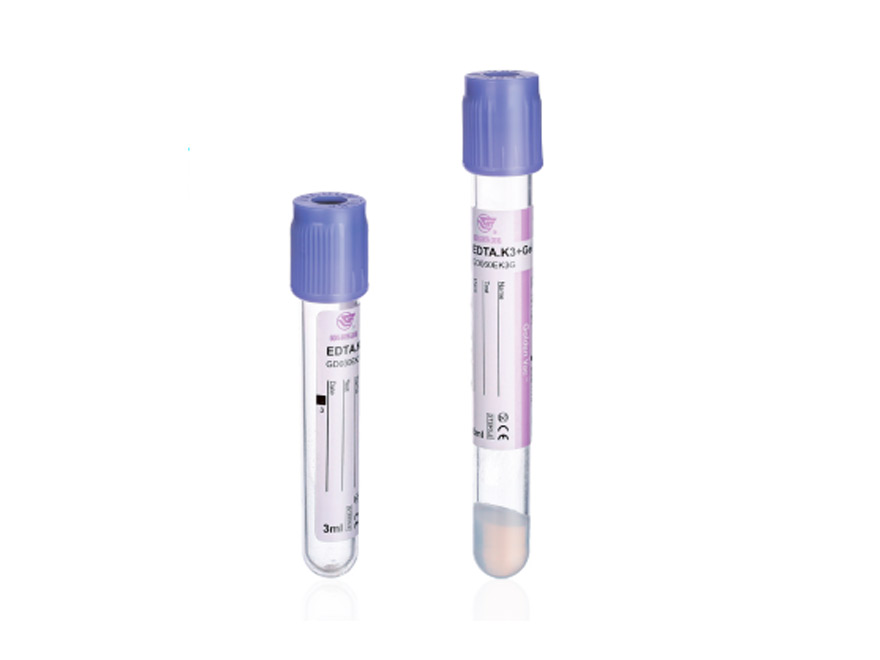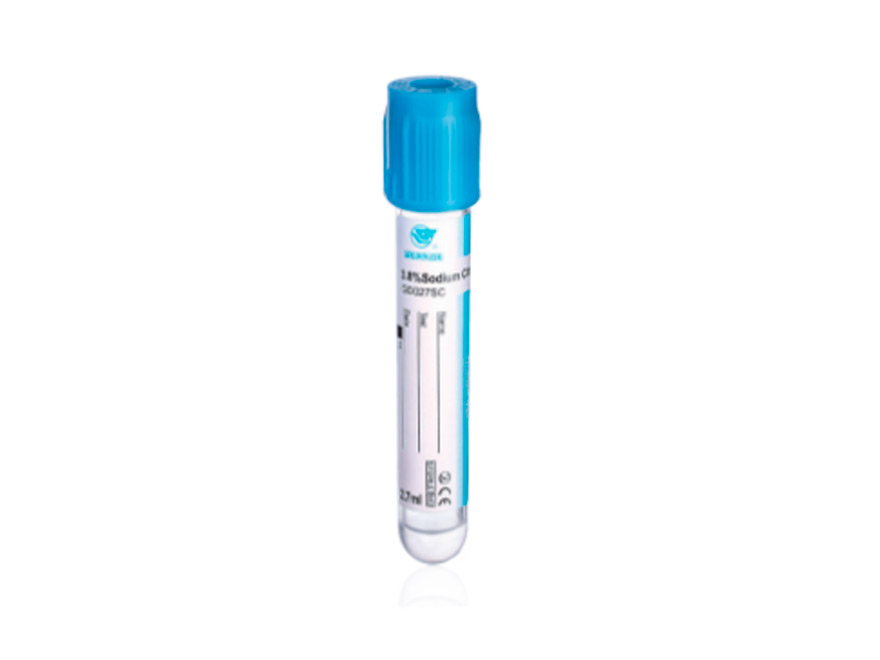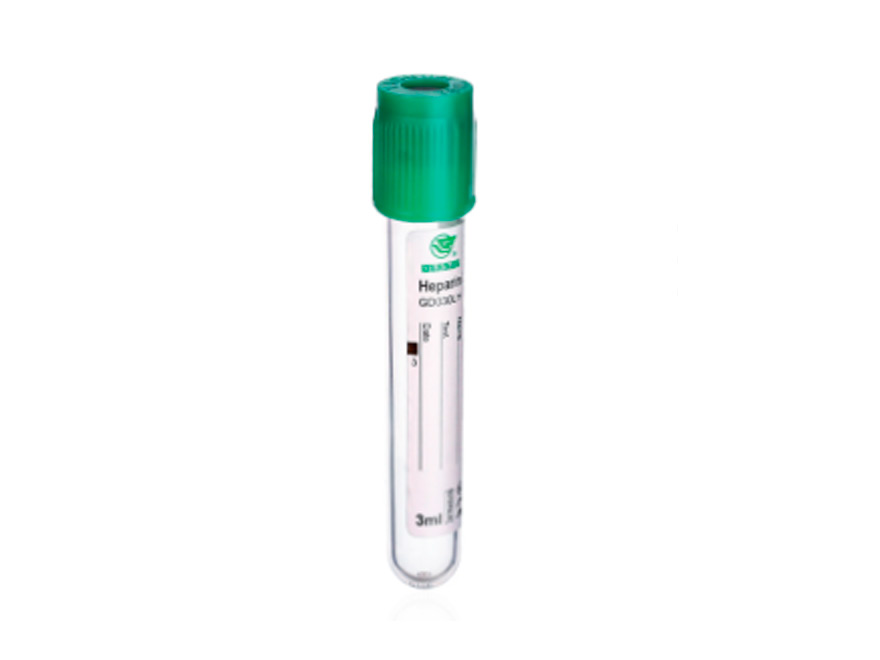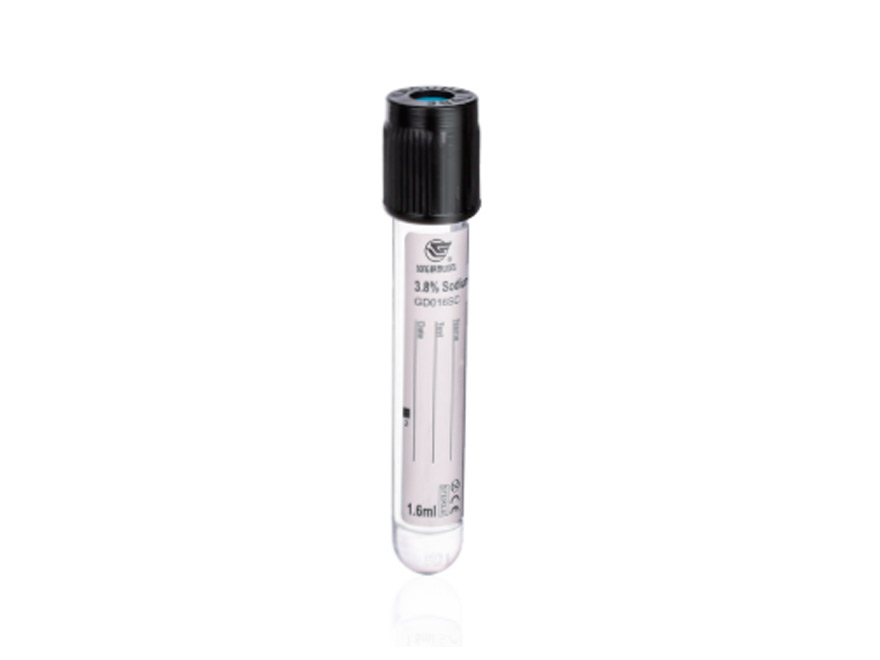Zoey 2022.8.12
The vacuum-tube blood collection system, which uses a variety of tubes of different sorts and is color-coded at the top to indicate the contents of each tube, is commonly used in various clinical and laboratory investigations. The majority of blood collection tubes have chemicals that hasten or stop blood coagulation.
The following lists the most commonly used blood collection tubes, their additives, and their uses in the clinical laboratory:

Additives: Sprayed K2 EDTA/ Sprayed K3 EDTA+ (Separate Gel)
Test items
(1) Blood Routine, CBC
· Collection method: At least 1.5mL of whole blood
· Biological reference interval
Project | Male | Female | Unit |
RBC | 4.2-4.6 | 3.7-5.5 | 106 cells/μL |
Hemoglobin | 12.3-18.3 | 11.3-16.0 | g/dL |
Hematocrit | 39-54 | 33-47 | % |
MCV | 79-99 | fl | |
MCH | 26-34 | pg | |
MCHC | 30-36 | g/dL | |
Platelet | 120-400 | 103 cells/μL | |
WBC | 4.0-11.0 | 103 cells/μL | |
Neutrophil | 40-74 | % | |
Lymphocyte | 18-48 | % | |
Monocyte | 2-10 | % | |
Eosinophil | 0-5 | % | |
Basophil | 0-2 | % | |
(2) Blood Type
· 2-3ml of whole blood, refrigerated at 2-8 ℃.
· Biological reference interval: A, B, AB, O.
(3) Glycohemoglobin, HbA1c
· Collection method: At least 1.5mL of whole blood.
· Biological reference interval:4.0-6.0%.
(4) RH Typing
· EDTA whole blood, avoid coagulation, store at room temperature or refrigerated, do not freeze.
· Biological reference interval: Rh(+); Rh(–).

The red tubes are used for a series of biochemistry tests that require serum, which is going to be affected adversely by separator gels, which are used in yellow bottles.
Additives – None or contains silica particles that work as coagulate activators.
What additive does: Clot activator promotes blood clotting with glass or silica particles.
Test items -- These tubes are used for blood bank serology, red cell prototyping, DAT, mono spot, RPR, ANA, and rheumatoid factor testing, as well as serum testing for glucose, triglycerides, cholesterol, HDL, potassium amylase, BUN, alkaline phosphatase, liver enzymes, and CK.
Gel&Clot Activator Tube aims to obtain high-quality serum specimens for biochemistry, immunology, and serology tests in the clinical inspection. At the bottom of the tube is a pure substance called gel that has very stable physical-chemical characteristics.
Additives: Gel&Clot Activator
What additive does: The Gel can avoid high-temperature decomposition and small molecules precipitation, hence it greatly reduces the risks of testing equipment clogging. The clot activator is used to shorten the time of blood coagulation.
Test items: Yellow tubes are commonly used for serum biochemistry, hepatitis B, AIDS, syphilis, thyroid function, trace elements, electrolytes, and other tests

The blue tube is used for clotting system-related hematology tests that require inactivated whole blood for examination.
Additive: 3.2% Sodium Citrate Buffer (0.109 mol/L)·
What additive does: It helps in binding and removing calcium in order to prevent the blood from clotting.
Test items:
a. Coagulation (clotting process-P.T)
b. PT (Prothrombin Time – evaluates the extrinsic system of the coagulation cascade & monitors coumadin therapy)
c. APTT/ PTT (Activated Partial Thromboplastin Time – evaluates the intrinsic system of the coagulation cascade & monitors heparin therapy)
d. FDP (Fibrinogen Degradation Products)
e. TT (Thrombin Time)
f. Factor assays
g. Platelet function

Heparin tube aims to obtain plasma specimen, which is used not only for emergency biochemistry tests but also for blood rheology tests.
Additives: Heparin (Sodium/Lithium)
What additive does: Inhibits thrombin formation to prevent clotting.
Test items:
Heparin is added to the blood collection tube, which has the effect of anti-thrombin and is suitable for erythrocyte fragility tests, erythrocyte pressure volume tests, blood rheology tests, etc.

The compound of Sodium Fluoride and anticoagulant tube aims to obtain highly stable plasma for blood glucose testing.
Additives:
1). Sodium Fluoride & Sodium Heparin
2). Sodium Fluoride & EDTA Na2
3). Sodium Fluoride & Potassium Oxalate
What additive does: Sodium Fluoride is a kind of inhibitor of glucose degradation, it has the function of repressing glucose metabolism and degradation. Optuinal anticoagulants are Heparin, EDTA and Potassium Oxalate, they could prevent blood coagulation and avoid blood hemolysis.
Test items: Chemistry testing, especially glucose(sugar) and lactate, and Glucose tolerance test (GTT).

Additive: 3.8% Sodium Citrate Buffer (0.129mol/L)
What additive does: Forms calcium salts to remove calcium.
Test items: ESR tube is mainly used for Erythrocyte Sedimentation Rate test. ESR is used to measure inflammation as inflamed red blood cells settle quickly relative to normal blood cells. A high ESR could be indicative of elevated inflammation.
https://www.sl-lab.com.tw/blood-routine-cbc/
https://healthy-mens.org/know-about-the-different-types-of-blood-collection-tubes-used-in-lab/
Welcome to Custom Medical Consumables Disposables at Gongdong Medical. Gongdong Medical is an experienced high-end OEM medical blood tube factory, supplier, and manufacturer in China. Welcome to contact.